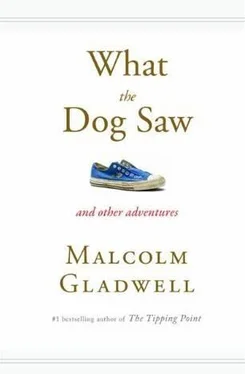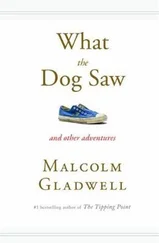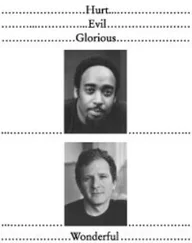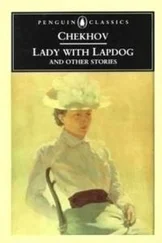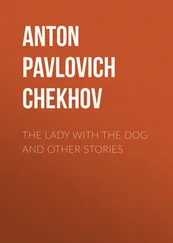Malcolm Gladwell - What the Dog Saw - And Other Adventures
Здесь есть возможность читать онлайн «Malcolm Gladwell - What the Dog Saw - And Other Adventures» весь текст электронной книги совершенно бесплатно (целиком полную версию без сокращений). В некоторых случаях можно слушать аудио, скачать через торрент в формате fb2 и присутствует краткое содержание. Жанр: Психология, на английском языке. Описание произведения, (предисловие) а так же отзывы посетителей доступны на портале библиотеки ЛибКат.
- Название:What the Dog Saw: And Other Adventures
- Автор:
- Жанр:
- Год:неизвестен
- ISBN:нет данных
- Рейтинг книги:5 / 5. Голосов: 1
-
Избранное:Добавить в избранное
- Отзывы:
-
Ваша оценка:
- 100
- 1
- 2
- 3
- 4
- 5
What the Dog Saw: And Other Adventures: краткое содержание, описание и аннотация
Предлагаем к чтению аннотацию, описание, краткое содержание или предисловие (зависит от того, что написал сам автор книги «What the Dog Saw: And Other Adventures»). Если вы не нашли необходимую информацию о книге — напишите в комментариях, мы постараемся отыскать её.
What the Dog Saw: And Other Adventures — читать онлайн бесплатно полную книгу (весь текст) целиком
Ниже представлен текст книги, разбитый по страницам. Система сохранения места последней прочитанной страницы, позволяет с удобством читать онлайн бесплатно книгу «What the Dog Saw: And Other Adventures», без необходимости каждый раз заново искать на чём Вы остановились. Поставьте закладку, и сможете в любой момент перейти на страницу, на которой закончили чтение.
Интервал:
Закладка:
October 30, 2000
The Ketchup Conundrum
1.
Many years ago, one mustard dominated the supermarket shelves: French’s. It came in a plastic bottle. People used it on hot dogs and bologna. It was a yellow mustard, made from ground white mustard seed with turmeric and vinegar, which gave it a mild, slightly metallic taste. If you looked hard in the grocery store, you might find something in the specialty-foods section called Grey Poupon, which was Dijon mustard, made from the more pungent brown mustard seed. In the early seventies, Grey Poupon was no more than a hundred-thousand-dollar-a-year business. Few people knew what it was or how it tasted, or had any particular desire for an alternative to French’s or the runner-up, Gulden’s. Then one day the Heublein Company, which owned Grey Poupon, discovered something remarkable: if you gave people a mustard taste test, a significant number had only to try Grey Poupon once to switch from yellow mustard. In the food world that almost never happens; even among the most successful food brands, only about one in a hundred has that kind of conversion rate. Grey Poupon was magic.
So Heublein put Grey Poupon in a bigger glass jar, with an enameled label and enough of a whiff of Frenchness to make it seem as if it were still being made in Europe (it was made in Hartford, Connecticut, from Canadian mustard seed and white wine). The company ran tasteful print ads in upscale food magazines. They put the mustard in little foil packets and distributed them with airplane meals – which was a brand-new idea at the time. Then they hired the Manhattan ad agency Lowe Marschalk to do something, on a modest budget, for television. The agency came back with an idea: A Rolls-Royce is driving down a country road. There’s a man in the backseat in a suit with a plate of beef on a silver tray. He nods to the chauffeur, who opens the glove compartment. Then comes what is known in the business as the reveal. The chauffeur hands back a jar of Grey Poupon. Another Rolls-Royce pulls up alongside. A man leans his head out the window. “Pardon me. Would you have any Grey Poupon?”
In the cities where the ads ran, sales of Grey Poupon leaped 40 to 50 percent, and whenever Heublein bought airtime in new cities sales jumped by 40 to 50 percent again. Grocery stores put Grey Poupon next to French’s and Gulden’s. By the end of the 1980s Grey Poupon was the most powerful brand in mustard. “The tagline in the commercial was that this was one of life’s finer pleasures,” Larry Elegant, who wrote the original Grey Poupon spot, says, “and that, along with the Rolls-Royce, seemed to impart to people’s minds that this was something truly different and superior.”
The rise of Grey Poupon proved that the American supermarket shopper was willing to pay more – in this case $3.99 instead of $1.49 for eight ounces – as long as what they were buying carried with it an air of sophistication and complex aromatics. Its success showed, furthermore, that the boundaries of taste and custom were not fixed: that just because mustard had always been yellow didn’t mean that consumers would use only yellow mustard. It is because of Grey Poupon that the standard American supermarket today has an entire mustard section. And it is because of Grey Poupon that a man named Jim Wigon decided, four years ago, to enter the ketchup business. Isn’t the ketchup business today exactly where mustard was thirty years ago? There is Heinz and, far behind, Hunt’s and Del Monte and a handful of private-label brands. Jim Wigon wanted to create the Grey Poupon of ketchup.
Wigon is from Boston. He’s a thickset man in his fifties, with a full salt-and-pepper beard. He runs his ketchup business – under the brand World’s Best Ketchup – out of the catering business of his partner, Nick Schiarizzi, in Norwood, Massachusetts, just off Route 1, in a low-slung building behind an industrial-equipment-rental shop. He starts with red peppers, Spanish onions, garlic, and a high-end tomato paste. Basil is chopped by hand, because the buffalo chopper bruises the leaves. He uses maple syrup, not corn syrup, which gives him a quarter of the sugar of Heinz. He pours his ketchup into a clear glass ten-ounce jar, and sells it for three times the price of Heinz, and for the past few years he has crisscrossed the country, peddling World’s Best in six flavors – regular, sweet, dill, garlic, caramelized onion, and basil – to specialty grocery stores and supermarkets. If you were in Zabar’s on Manhattan ’s Upper West Side a few months ago, you would have seen him at the front of the store, in a spot between the sushi and the gefilte fish. He was wearing a World’s Best baseball cap, a white shirt, and a red-stained apron. In front of him, on a small table, was a silver tureen filled with miniature chicken and beef meatballs, a box of toothpicks, and a dozen or so open jars of his ketchup. “Try my ketchup!” Wigon said, over and over, to anyone who passed. “If you don’t try it, you’re doomed to eat Heinz the rest of your life.”
In the same aisle at Zabar’s that day two other demonstrations were going on, so that people were starting at one end with free chicken sausage, sampling a slice of prosciutto, and then pausing at the World’s Best stand before heading for the cash register. They would look down at the array of open jars, and Wigon would impale a meatball on a toothpick, dip it in one of his ketchups, and hand it to them with a flourish. The ratio of tomato solids to liquid in World’s Best is much higher than in Heinz, and the maple syrup gives it an unmistakable sweet kick. Invariably, people would close their eyes, just for a moment, and do a subtle double take. Some of them would look slightly perplexed and walk away, and others would nod and pick up a jar. “You know why you like it so much?” he would say, in his broad Boston accent, to the customers who seemed most impressed. “Because you’ve been eating bad ketchup all your life!” Jim Wigon had a simple vision: build a better ketchup – the way Grey Poupon built a better mustard – and the world will beat a path to your door. If only it were that easy.
2.
The story of World’s Best Ketchup cannot properly be told without a man from White Plains, New York, named Howard Moskowitz. Moskowitz is sixty, short and round, with graying hair and huge gold-rimmed glasses. When he talks, he favors the Socratic monologue – a series of questions that he poses to himself, then answers, punctuated by “ahhh” and much vigorous nodding. He is a lineal descendant of the legendary eighteenth-century Hasidic rabbi known as the Seer of Lublin. He keeps a parrot. At Harvard, he wrote his doctoral dissertation on psychophysics, and all the rooms on the ground floor of his food-testing and market-research business are named after famous psychophysicists. (“Have you ever heard of the name Rose Marie Pangborn? Ahhh. She was a professor at Davis. Very famous. This is the Pangborn kitchen.”) Moskowitz is a man of uncommon exuberance and persuasiveness: if he had been your freshman statistics professor, you would today be a statistician. “My favorite writer? Gibbon,” he burst out, when we met not long ago. He had just been holding forth on the subject of sodium solutions. “Right now I’m working my way through the Hales history of the Byzantine Empire. Holy shit! Everything is easy until you get to the Byzantine Empire. It’s impossible. One emperor is always killing the others, and everyone has five wives or three husbands. It’s very Byzantine.”
Moskowitz set up shop in the seventies, and one of his first clients was Pepsi. The artificial sweetener aspartame had just become available, and Pepsi wanted Moskowitz to figure out the perfect amount of sweetener for a can of Diet Pepsi. Pepsi knew that anything below 8 percent sweetness was not sweet enough and anything over 12 percent was too sweet. So Moskowitz did the logical thing. He made up experimental batches of Diet Pepsi with every conceivable degree of sweetness – 8 percent, 8.25 percent, 8.5, and on and on up to 12 – gave them to hundreds of people, and looked for the concentration that people liked the most. But the data were a mess – there wasn’t a pattern – and one day, sitting in a diner, Moskowitz realized why. They had been asking the wrong question. There was no such thing as the perfect Diet Pepsi. They should have been looking for the perfect Diet Pepsis.
Читать дальшеИнтервал:
Закладка:
Похожие книги на «What the Dog Saw: And Other Adventures»
Представляем Вашему вниманию похожие книги на «What the Dog Saw: And Other Adventures» списком для выбора. Мы отобрали схожую по названию и смыслу литературу в надежде предоставить читателям больше вариантов отыскать новые, интересные, ещё непрочитанные произведения.
Обсуждение, отзывы о книге «What the Dog Saw: And Other Adventures» и просто собственные мнения читателей. Оставьте ваши комментарии, напишите, что Вы думаете о произведении, его смысле или главных героях. Укажите что конкретно понравилось, а что нет, и почему Вы так считаете.
